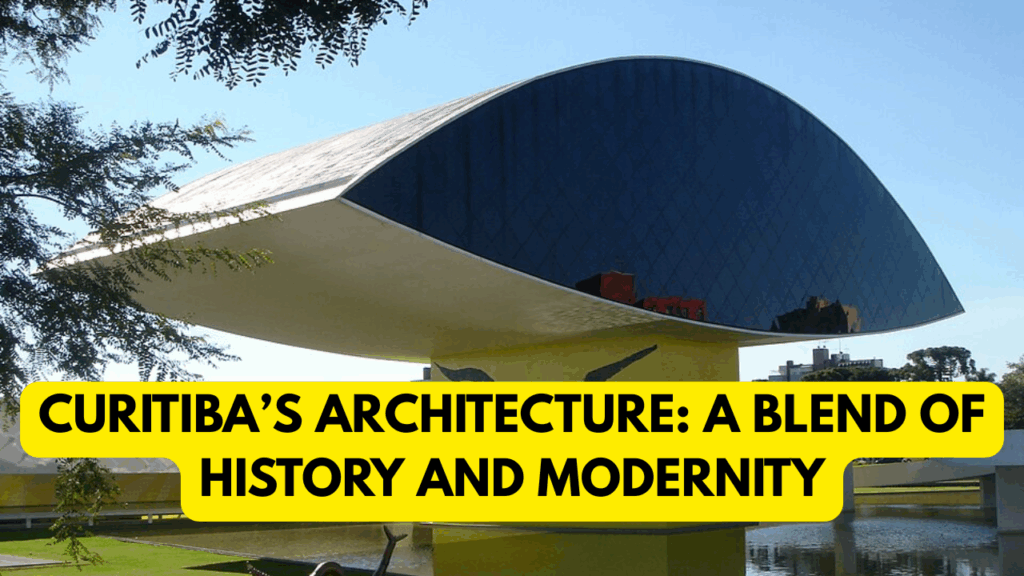
Curitiba, the capital of Paraná in southern Brazil, is often recognized for its sustainable urban planning and green initiatives. However, one of the city’s most fascinating features is its architecture—a blend of historic charm and contemporary design. From colonial-era buildings to bold modern landmarks, Curitiba’s streets tell a story of evolution, creativity, and cultural identity.
This article explores how Curitiba’s architecture reflects its history while embracing innovation, showcasing the city as a living museum of diverse styles.
A Glimpse into Curitiba’s Architectural History
Curitiba’s architectural identity has been shaped by European immigrants, indigenous influences, and Brazilian modernist movements. Each era left its mark on the city:
- Colonial Era: Characterized by simple, functional designs with influences from Portuguese settlers.
- Immigrant Contributions: German, Italian, and Polish immigrants introduced unique materials and stylistic elements.
- Modernist Period: Inspired by Brazil’s mid-20th-century architectural revolution, with an emphasis on clean lines, concrete structures, and bold forms.
- Contemporary Era: Today, sustainability and innovation define Curitiba’s skyline, combining aesthetics with functionality.
Iconic Historical Buildings
- Paço da Liberdade
Once the City Hall, this neoclassical building stands as a symbol of Curitiba’s political and social history. It now serves as a cultural center. - Santa Felicidade District
Known for its Italian immigrant roots, this neighborhood showcases charming houses, restaurants, and wineries with traditional European architectural touches. - Rua das Flores
The first pedestrian-only street in Brazil, Rua das Flores is lined with historic façades that transport visitors back in time.
Modern Architectural Landmarks
- Oscar Niemeyer Museum (MON)
Nicknamed the “Eye Museum” for its futuristic design, this landmark by renowned architect Oscar Niemeyer is a striking example of Brazilian modernism. - Wire Opera House (Ópera de Arame)
Built of steel tubes and glass, this unique open-air concert hall is set in a former quarry, blending nature with modern architecture. - Botanical Garden Greenhouse
Inspired by 19th-century French architecture, its glass and metal structure has become an iconic symbol of Curitiba’s modern identity.
Sustainability in Curitiba’s Architecture
Curitiba is internationally known for its eco-friendly urban design. Architectural projects often integrate green spaces, renewable materials, and innovative solutions for urban living. Examples include:
- Eco-friendly Housing Projects: Focus on affordable housing with sustainable designs.
- Public Parks and Green Spaces: Integrated into neighborhoods to balance urban growth.
- Reused Industrial Sites: Old factories and quarries repurposed into cultural and leisure areas.
Comparison Table: Historical vs Modern Architecture in Curitiba
| Feature | Historical Architecture | Modern Architecture |
|---|---|---|
| Style | Colonial, neoclassical, immigrant influence | Modernist, futuristic, eco-friendly |
| Materials | Wood, stone, clay bricks | Concrete, steel, glass, sustainable materials |
| Functionality | Religious, governmental, residential | Cultural, environmental, multifunctional |
| Cultural Expression | Reflects European immigration | Symbolizes innovation and sustainability |
| Key Examples | Paço da Liberdade, Santa Felicidade | Wire Opera House, MON, Botanical Garden |
The Role of Architecture in Curitiba’s Identity
Architecture in Curitiba is not just about aesthetics; it is about creating spaces that reflect the city’s values of inclusivity, sustainability, and cultural pride. The harmonious blend of old and new helps preserve heritage while projecting a forward-looking image.
Key impacts include:
- Tourism Growth: Landmarks like the “Eye Museum” and Botanical Garden attract global visitors.
- Cultural Preservation: Restored historic buildings keep traditions alive.
- Community Engagement: Public spaces encourage social interaction and cultural exchange.
Overview Table
| Category | Highlights | Impact on City Identity |
|---|---|---|
| Colonial Influences | Portuguese-style houses, churches | Foundation of local architecture |
| Immigrant Contributions | Italian, German, Polish touches | Adds diversity and uniqueness |
| Modernist Icons | Oscar Niemeyer Museum | Puts Curitiba on the global map |
| Nature-Integrated Design | Wire Opera House, parks, quarries | Blends environment with culture |
| Sustainable Innovation | Green housing, repurposed sites | Reinforces eco-friendly reputation |
| Cultural Hubs | Paço da Liberdade, cultural centers | Preserves history, fosters art |
Conclusion
Curitiba’s architecture is a vivid tapestry of history and innovation. From colonial buildings that narrate the city’s immigrant past to modern landmarks that embody sustainability and creativity, the city demonstrates how tradition and progress can coexist harmoniously.
As Curitiba continues to grow, its architectural identity will remain a beacon of cultural pride, environmental awareness, and forward-thinking design. For travelers, exploring Curitiba is not just about sightseeing—it’s about walking through a living story told in stone, glass, and green spaces.
FAQs
Q1: What makes Curitiba’s architecture unique?
Its seamless blend of historical heritage, immigrant influences, and sustainable modern designs.
Q2: Which modern landmark is a must-see in Curitiba?
The Oscar Niemeyer Museum, also known as the “Eye Museum,” is an iconic attraction.
Q3: How does Curitiba integrate sustainability into architecture?
By repurposing old sites, creating eco-friendly housing, and integrating green spaces into urban planning.

